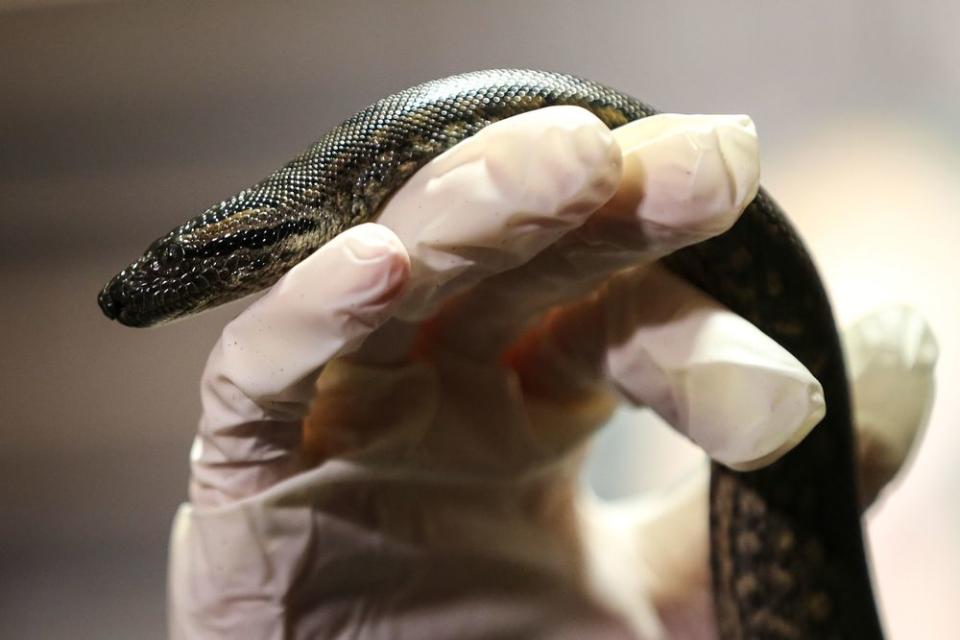Anaconda Living in All-Female Snake Exhibit Welcomes Two Babies Through Virgin Birth

The New England Aquarium has two surprising new residents: a pair of baby green anacondas.
It isn’t the species that makes this birth unusual, it’s the setting. The little snakes were born to a mom living in a exhibit that houses “only adult females of the world’s largest snake species,” reports the Boston aquarium.
“DNA testing has confirmed that the 2-foot-long, green anaconda youngsters are the product of nonsexual reproduction. The extremely rare reproductive strategy is called parthenogenesis, which translated from its Greek word origins means virgin birth,” the facility shared in a statement.
According to the New England Aquarium, this is only the second recorded instance of parthenogenesis in a green anaconda — three snakes were born at a U.K. zoo through a virgin birth in 2014. While parthenogenesis has been documented in animals like lizards, sharks, birds and snakes, it is still extremely rare for a member of a vertebrate species to experience a virgin birth. Parthenogenesis is more common in insects and plants.
RELATED: Record-Breaking 17-Foot Python Found Slithering Around Florida
Anna the 8-year-old anaconda, who lives with two other female anacondas, gave birth this past winter, but the aquarium held off on sharing the news until they could confirm the snake gave birth through parthenogenesis.

“The anaconda snakes were closely checked to reconfirm their gender. Also ruling out a delayed embryo implantation was on the list, if there had been a previous exposure to a male. But Anna’s life history was well known. She had been born in the care of a certified reptile organization and had come to the Aquarium as a very young animal with no exposure to adult males,” the home of the 10-foot-long new mom shared. “The ruling out process had eliminated any other suspects but parthenogenesis, yet testing the DNA was the only way to have a positive confirmation. Aquarium veterinarians sent off tissue samples for analysis.”
The analysis returned what the aquarium staff expected: confirmation that “Anna reproduced non-sexually.”
RELATED: Are Snakes Really Hiding in Pool Noodles? An Expert Weighs In on the Threat Circulating Online
There are several different kinds of parthenogenesis, including some that result in genetics clones of the mom. The aquarium says that from the limited genetic sequencing that has been preformed on Anna and her offspring, they believe the babies could be genetic clones of their mom, since all the DNA has matched so far.
The two unnamed reptile youngsters are said to be doing well. They are being kept off exhibit while they continue to grow.

